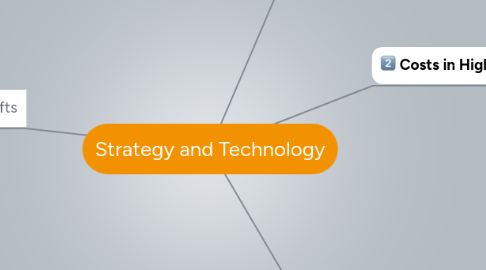
1. Tech paradigm shifts
1.1. Techs revolutionize the structure of the industry
1.2. Natural Limits to Tech (Tech S-Curve)
1.2.1. Increasing returns
1.2.2. Inflection point
1.2.3. Diminishing returns
1.3. Established tech (horse and cart)
1.4. Successor Tech (automobile)
1.5. Disruptive tech
2. Technical Standards and Format Wars
2.1. Tech Standards
2.1.1. Example Compiuter keyboard (QWERTY)
2.1.2. Dominant design
2.1.3. Benefits
2.1.3.1. Helps guarantee compatibility between products and complements.
2.1.3.2. Help reduce confusion in the minds of consumers
2.1.3.3. Help reduce production costs
2.1.3.4. Help reduce risks associated with supplying complementary products and increase supply for those complements
2.1.4. Establishment
2.1.4.1. When benefits are recognized
2.1.4.2. Set by cooperation among businesses often through a medium of an industry association
2.1.4.2.1. public domain
2.1.5. Consequences
2.1.5.1. Network effects
2.1.5.2. Positive feedback
2.1.5.3. Lockout
2.2. Format wars
2.2.1. Strategies for winning
2.2.1.1. Ensure supply of complements
2.2.1.2. Leverage killer applications
2.2.1.3. Aggressive pricing and marketing
2.2.1.4. Cooperate with competitors
2.2.1.5. License the format
3. Costs in High Tech Industries
3.1. Comparative cost economics
3.1.1. law of diminishing returns
3.2. Strategic significance
3.2.1. Marginal costs
4. First-mover Advantages
4.1. Pioneers a particular product category or feature
4.2. Disadvantage
4.2.1. The first version tends to be the pilot one that will receive suggestions and low demand while second-movers will harvest this information to improve next version
4.3. Primary sources
4.3.1. Opportunity to exploit network effects and positive feedback loops, locking consumers into its tech.
4.3.2. May be able to establish significant brand loyalty, which is expensive for later entrants to break down
4.3.3. May be able to increase sales volume ahead of rivals and thus reap cost advantages
4.3.4. May be able to create switching costs for customers to make it difficult for rivals to enter market
4.4. Exploit Advantage
4.4.1. 1. Develop and market innovation
4.4.2. 2. Develop and market innovation jointly with other companies through strategic alliance or joint venture
4.4.3. 3. License innovation to others and allow them to develop market
4.4.4. 3 Innovation Strategies
4.4.4.1. Complementary assets
4.4.4.2. Height of barriers to imitation
4.4.4.3. Capable competitors
